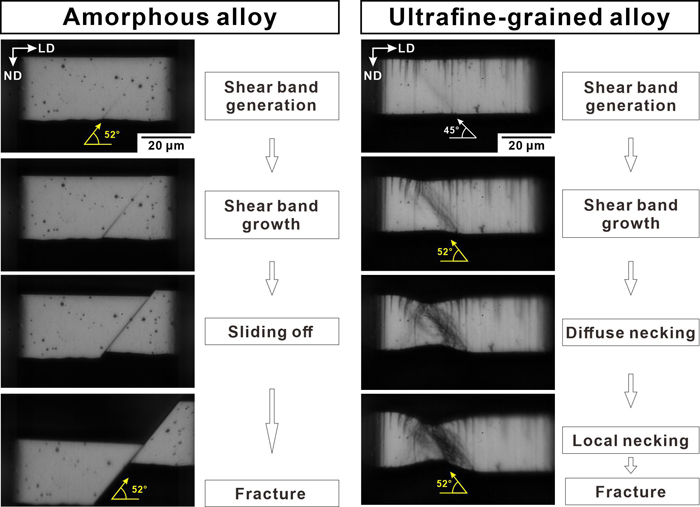Virtual issue
Volume 62, Issue 8
Displaying 1-23 of 23 articles from this issue
- |<
- <
- 1
- >
- >|
Publication Data
-
2022Volume 62Issue 8 Pages Cover-
Published: August 15, 2022
Released on J-STAGE: August 18, 2022
Download PDF (537K) -
2022Volume 62Issue 8 Pages Editorial-
Published: August 15, 2022
Released on J-STAGE: August 18, 2022
Download PDF (895K) -
2022Volume 62Issue 8 Pages Contents-
Published: August 15, 2022
Released on J-STAGE: August 18, 2022
Download PDF (203K)
Review Articles
Fundamentals of High Temperature Processes
-
Article type: Review
2022Volume 62Issue 8 Pages 1561-1572
Published: August 15, 2022
Released on J-STAGE: August 18, 2022
Advance online publication: May 18, 2022Download PDF (1489K) Full view HTML -
Article type: Review
2022Volume 62Issue 8 Pages 1573-1585
Published: August 15, 2022
Released on J-STAGE: August 18, 2022
Advance online publication: June 03, 2022Download PDF (1377K) Full view HTML
Regular Articles
Fundamentals of High Temperature Processes
-
Article type: Regular Article
2022Volume 62Issue 8 Pages 1586-1594
Published: August 15, 2022
Released on J-STAGE: August 18, 2022
Advance online publication: May 30, 2022Download PDF (1514K) Full view HTML -
Article type: Regular Article
2022Volume 62Issue 8 Pages 1595-1606
Published: August 15, 2022
Released on J-STAGE: August 18, 2022
Download PDF (1886K) Full view HTML
Ironmaking
-
Article type: Regular Article
2022Volume 62Issue 8 Pages 1607-1617
Published: August 15, 2022
Released on J-STAGE: August 18, 2022
Download PDF (1242K) Full view HTML -
Article type: Regular Article
2022Volume 62Issue 8 Pages 1618-1623
Published: August 15, 2022
Released on J-STAGE: August 18, 2022
Download PDF (764K) Full view HTML -
Article type: Regular Article
2022Volume 62Issue 8 Pages 1624-1628
Published: August 15, 2022
Released on J-STAGE: August 18, 2022
Download PDF (949K) Full view HTML -
Article type: Regular Article
2022Volume 62Issue 8 Pages 1629-1638
Published: August 15, 2022
Released on J-STAGE: August 18, 2022
Download PDF (1824K) Full view HTML
Steelmaking
-
Article type: Regular Article
2022Volume 62Issue 8 Pages 1639-1648
Published: August 15, 2022
Released on J-STAGE: August 18, 2022
Download PDF (1501K) Full view HTML
Casting and Solidification
-
Article type: Regular Article
2022Volume 62Issue 8 Pages 1649-1656
Published: August 15, 2022
Released on J-STAGE: August 18, 2022
Download PDF (1333K) Full view HTML -
Article type: Regular Article
2022Volume 62Issue 8 Pages 1657-1665
Published: August 15, 2022
Released on J-STAGE: August 18, 2022
Download PDF (1500K) Full view HTML -
Article type: Regular Article
2022Volume 62Issue 8 Pages 1666-1673
Published: August 15, 2022
Released on J-STAGE: August 18, 2022
Advance online publication: June 10, 2022Download PDF (709K) Full view HTML -
Article type: Regular Article
2022Volume 62Issue 8 Pages 1674-1683
Published: August 15, 2022
Released on J-STAGE: August 18, 2022
Download PDF (1938K) Full view HTML
Instrumentation, Control and System Engineering
-
Article type: Regular Article
2022Volume 62Issue 8 Pages 1684-1693
Published: August 15, 2022
Released on J-STAGE: August 18, 2022
Download PDF (682K) Full view HTML -
Article type: Regular Article
2022Volume 62Issue 8 Pages 1694-1704
Published: August 15, 2022
Released on J-STAGE: August 18, 2022
Advance online publication: June 13, 2022Download PDF (1303K) Full view HTML
Chemical and Physical Analysis
-
Article type: Regular Article
2022Volume 62Issue 8 Pages 1705-1714
Published: August 15, 2022
Released on J-STAGE: August 18, 2022
Advance online publication: May 26, 2022Download PDF (593K) Full view HTML
Welding and Joining
-
Article type: Regular Article
2022Volume 62Issue 8 Pages 1715-1724
Published: August 15, 2022
Released on J-STAGE: August 18, 2022
Download PDF (2154K) Full view HTML -
Article type: Regular Article
2022Volume 62Issue 8 Pages 1725-1730
Published: August 15, 2022
Released on J-STAGE: August 18, 2022
Download PDF (504K) Full view HTML
Surface Treatment and Corrosion
-
Article type: Regular Article
2022Volume 62Issue 8 Pages 1731-1740
Published: August 15, 2022
Released on J-STAGE: August 18, 2022
Download PDF (1931K) Full view HTML
Mechanical Properties
-
Article type: Regular Article
2022Volume 62Issue 8 Pages 1741-1749
Published: August 15, 2022
Released on J-STAGE: August 18, 2022
Advance online publication: May 26, 2022Download PDF (1932K) Full view HTML
- |<
- <
- 1
- >
- >|




















